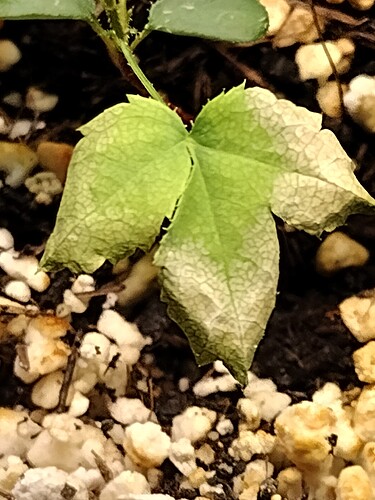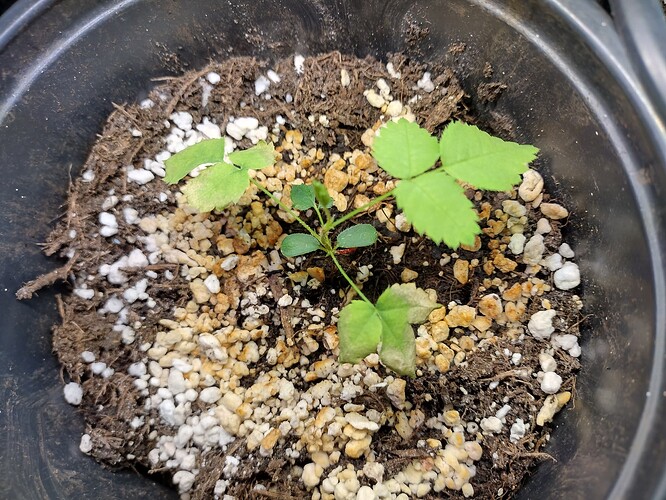It’s the runt of the litter but as I only have 5 left I don’t wish to cull anymore if I dont have to
Looks like it dried out a little too much after transplantation. Keep the new leaves growing strong and the old leaves won’t matter.
And get rid of the aphids.
James_D, I guess the problem could be over fertilization, a fertilizer burn.
When fertilizer burn is recognized early, it can be corrected to save your little plant.
Hold the pot under a running tap, wait a few minutes and repeat the process. The first rinse dissolves the accumulated salts, the second cleans the plant substrate. Drain thoroughly and place the rose on a well-absorbent paper (kitchen roll) to soak up excess water. Be very careful. Withhold feeding until new, healthy foliage appears. Watering should after this procedure also be held back for a while to avoid root rot. Good luck!
Ah that’s frustrating! The soil I use has slow release balls in it so maybe I avoid them for the future until they get a little larger
Ok, I understand. In this case, I would first recommend repotting the seedling in a substrate without fertilizer for a short time so that it can regenerate.
I don’t think the wash-out method I mentioned is advisable if there are long-term fertilizer pellets in the substrate. This would only lead to the fertilizer dissolving and being released even faster.
As soon as the seedling sprouts normally and healthily again, I would start with a small amount of liquid fertilizer and slowly increase it. Liquid fertilizer made from seaweed is particularly beneficial for root growth. The richness of microelements and growth-promoting hormones in seaweed supports strong root development that give plants better access to water and nutrients. Seaweed fertilizer is also less harsh and aggressive to the root system.
Thank you for the advice. Do you think it might survive without action or is that unlikely?
In my opinion, there are signs that this could be the case. The last and largest developed leaf looks better and healthier to me, but I don’t have enough extensive experience to say for sure. It’s up to you to decide. I’ll keep my fingers crossed for you.
I’d be inclined to leave well enough alone, but keep a close eye on that new growth, and no additional fertilizer. Have you got a fan running across your seedlings? I’m assuming this all happening indoors; my germinations are outdoors, currently happening with daytime temps just a few degrees above freezing…
Yeah these are indoors, these ones germinated at Christmas with this being the smallest by far. Another one is about 4 times it’s size from the same cross
The elongated light green/yellow things on the cotyledons make me think you could have thrips. The new grow doesn’t look too distorted yet (they tend to feed on new growth as it expands). I’d breathe on the plant and look at it under a magnifying glass. Carbon dioxide makes thrips move around a bit more and you can see them. They can lead to lots of damage if they build on a young seedling and can spread and if they attack a very young seedling they may never start taking off well.
Thank you for your concern, I had a quick check earlier and couldn’t find any but the photo I put up does appear to have something on it. So shall look again, thanks for the advice

